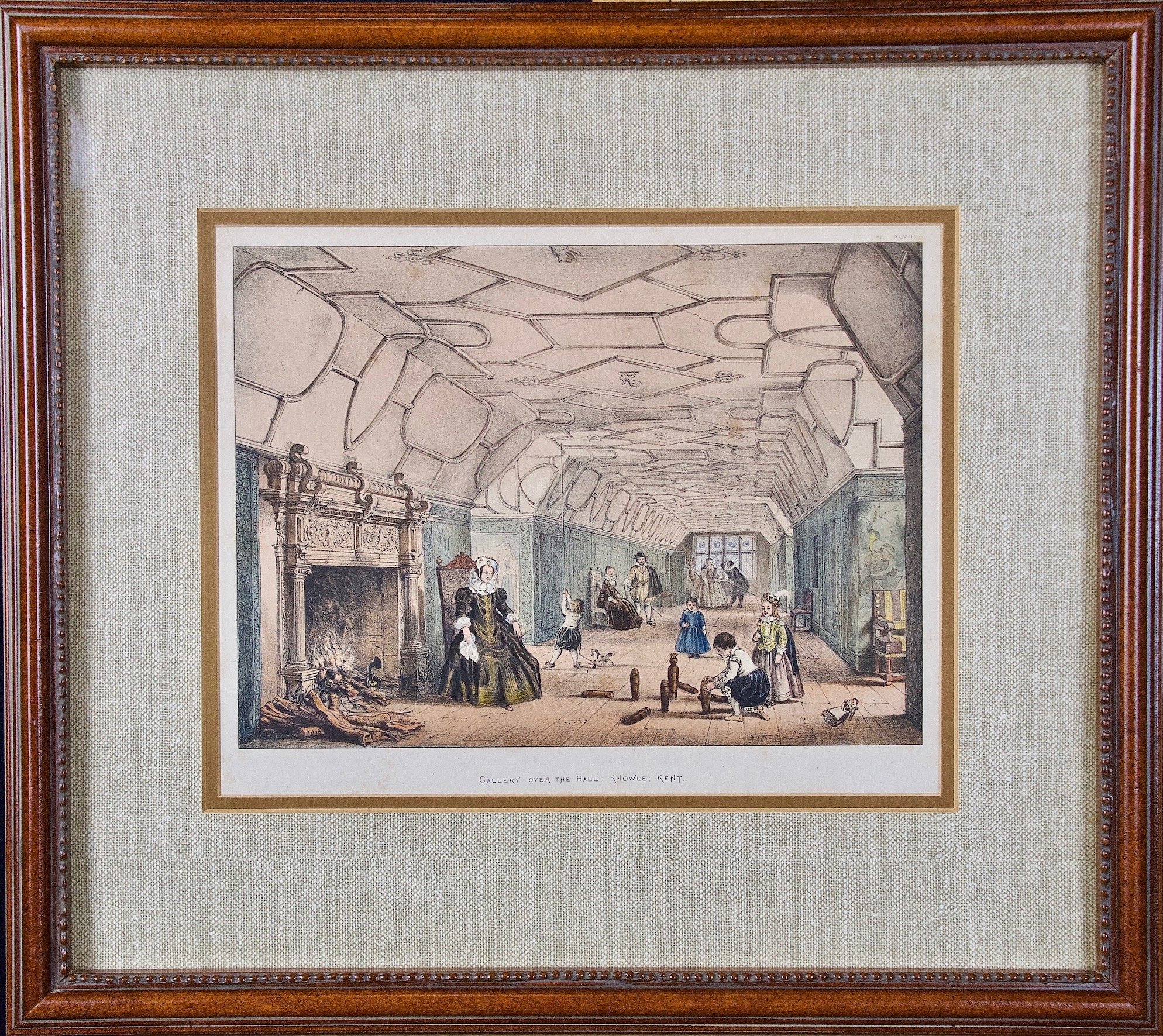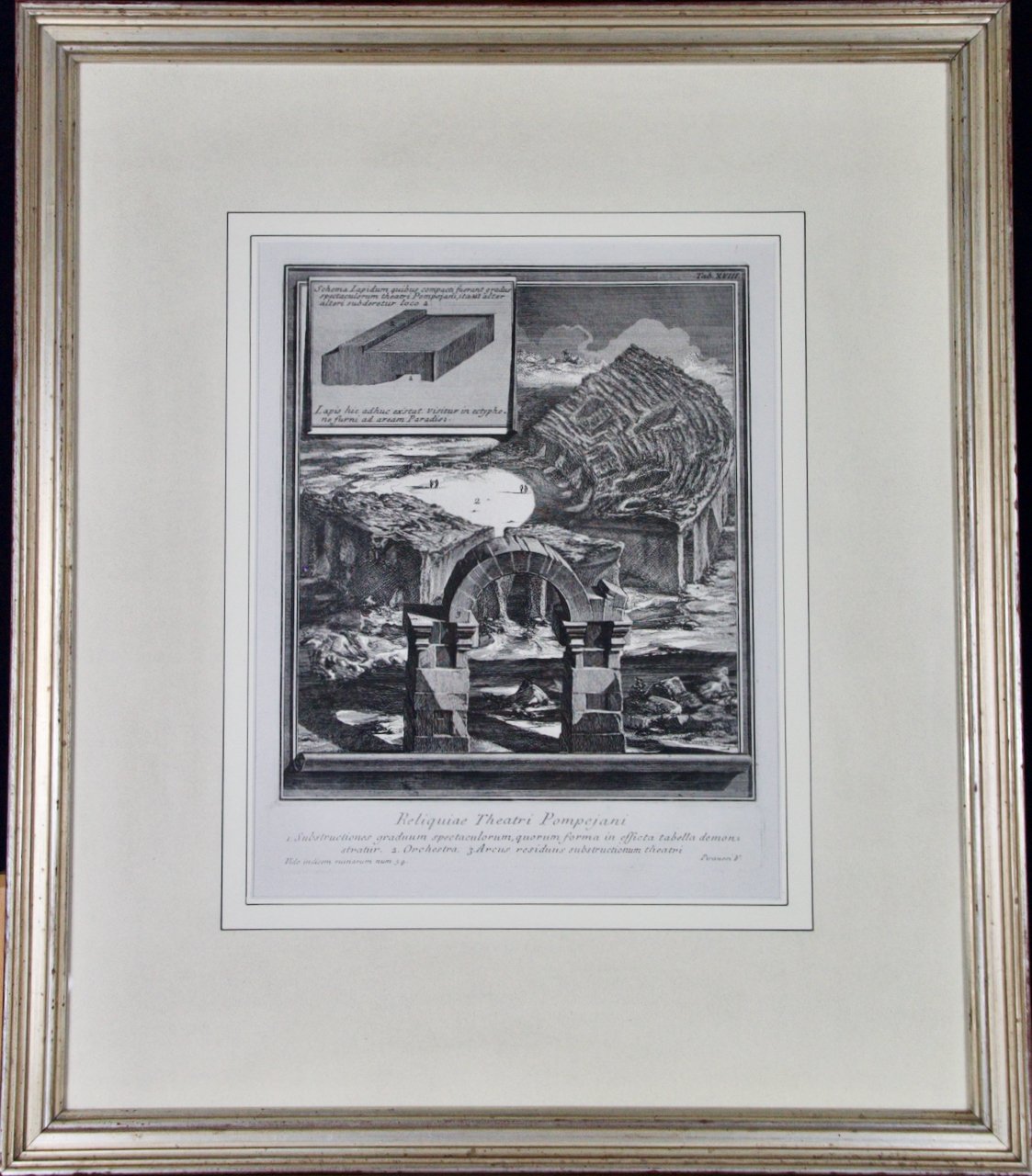Ancient Roman Temple Architecture: An 18th Century Framed Etching by Piranesi
This is an 18th century etching by Giovanni Battista Piranesi entitled "Veduta del Tempio detto della Tosse su la Via Tiburtina, un miglio vicino a Tivoli" (View of the so-called Temple of the Cough on the Via Tiburtina, a Mile from Tivoli), from Vedute di Roma (Views of Rome), published in Rome in 1763. This structure is thought to be the tomb of the Turcia or Tossia family.
Creator: Giovanni Battista Piranesi (1720-1778, Italian)
Creation Year: 1763
Dimensions: Height: 30 in (76.2 cm) Width: 35 in (88.9 cm) Depth: 1 in (2.54 cm)
Medium: Etching
Condition: See description below.
Reference #: 4664
This is an 18th century etching by Giovanni Battista Piranesi entitled "Veduta del Tempio detto della Tosse su la Via Tiburtina, un miglio vicino a Tivoli" (View of the so-called Temple of the Cough on the Via Tiburtina, a Mile from Tivoli), from Vedute di Roma (Views of Rome), published in Rome in 1763. This structure is thought to be the tomb of the Turcia or Tossia family.
Creator: Giovanni Battista Piranesi (1720-1778, Italian)
Creation Year: 1763
Dimensions: Height: 30 in (76.2 cm) Width: 35 in (88.9 cm) Depth: 1 in (2.54 cm)
Medium: Etching
Condition: See description below.
Reference #: 4664
This is an 18th century etching by Giovanni Battista Piranesi entitled "Veduta del Tempio detto della Tosse su la Via Tiburtina, un miglio vicino a Tivoli" (View of the so-called Temple of the Cough on the Via Tiburtina, a Mile from Tivoli), from Vedute di Roma (Views of Rome), published in Rome in 1763. This structure is thought to be the tomb of the Turcia or Tossia family.
Creator: Giovanni Battista Piranesi (1720-1778, Italian)
Creation Year: 1763
Dimensions: Height: 30 in (76.2 cm) Width: 35 in (88.9 cm) Depth: 1 in (2.54 cm)
Medium: Etching
Condition: See description below.
Reference #: 4664
In this etching Piranesi depicts an architectural ruin located along the road heading east from the city. Legend has it that this temple was dedicated to the cough in an effort to prevent the spread of pulmonary disease among the citizens. The landscape around the building is overgrown and the building itself is neglected with plants growing on its roof. There are multiple people depicted around the temple in part to give perspective, as is common in Piranesi's depictions of ancient Roman architectural ruins. However the faces of these figures are more expressive than in most of Piranesi's scenes. The seated figure appears to be in some distress with dark eyes and an open mouth. A woman with a staff appears to scold a younger man.
The etching is in the collection of several museums, including: The British Museum, The Metropolitan Museum of Art, The Yale Art Gallery, The National Gallery of Art, The Chicago Art Institute, The Fine Arts Museums of San Francisco, The Harvard Art Museum. References: Wilton-Ely 1994 / Giovanni Battista Piranesi, the complete etchings, 202 Hind 1922 / Giovanni Battista Piranesi, a critical study, 69.1 Focillon 1918 / Giovanni Battista Piranesi: Essai de catalogue raisonné de son uvre, 774
The etching is presented in a gold and black-colored wood frame with a white mat. The frame measures 30" x 35" x 1". There a small dent in the edge of frame, a short crease in the upper sheet margin and a short tear or crease in the lower margin.
Piranesi was born in Venice in 1720 and died in Rome in 1778. He was the son of a stone mason and was trained as an architect. After a slow start he eventually achieved great success as an architect, archaeologist, artist, designer, collector, and antiquities dealer. His mission was to glorify the architecture of ancient Rome through his engravings and etchings. His highly dramatized prints often depict imaginary interiors and frequently include figures in mysterious activities, who are dwarfed by the magnitude of their monumental surroundings.
Piranesi's studies of the antiquities of Rome was one of the great archaeological, historical and artistic works of its era. His style greatly influenced the neoclassical art movement of the late 18th century. His dramatic scenes inspired generations of set designers, as well as artists, architects, writers and historians. In 1757 Piranesi was elected as an Honorary Fellow of the Society of Antiquaries. His prints have continued to increase in value to institutions and collectors.




































